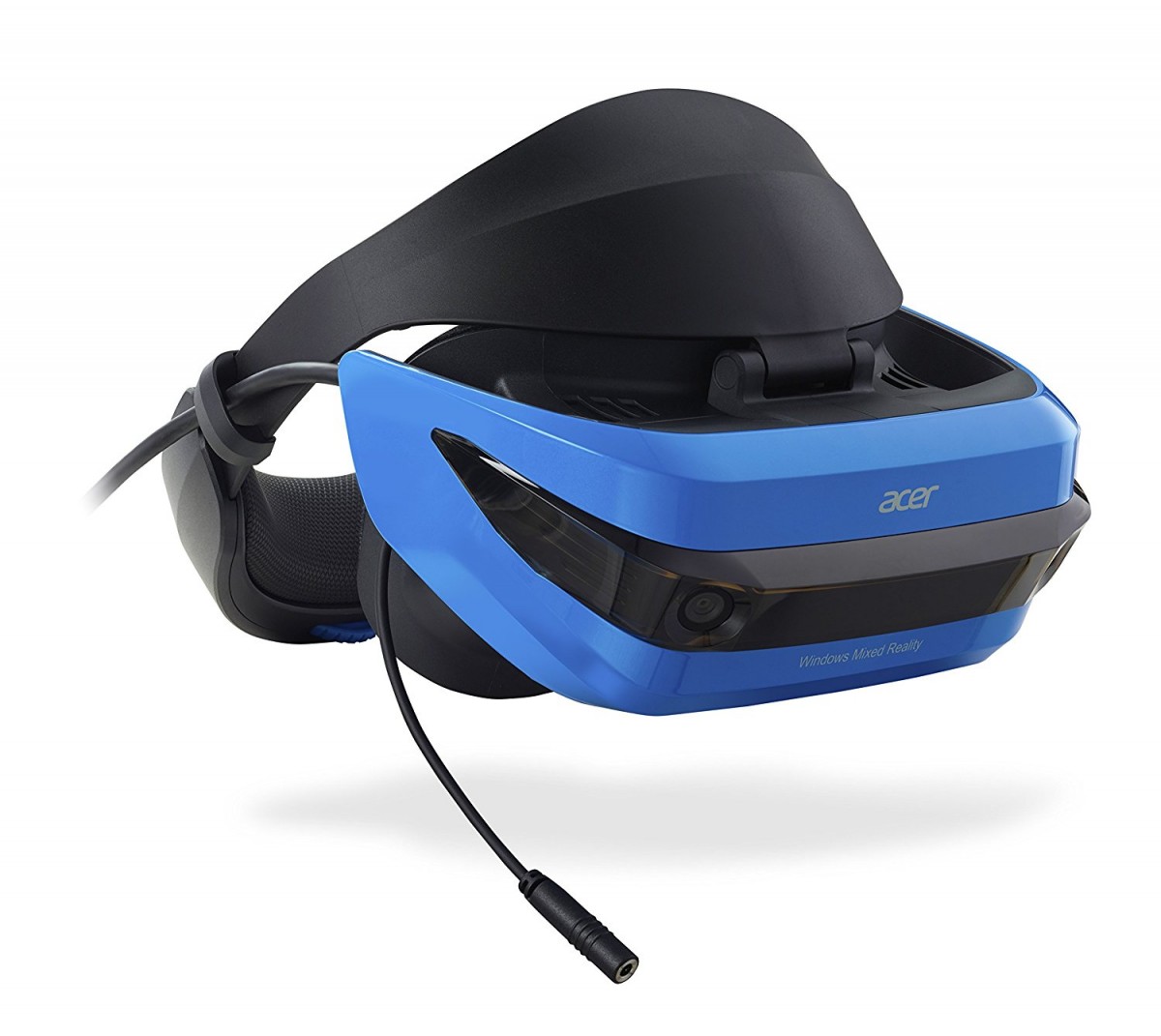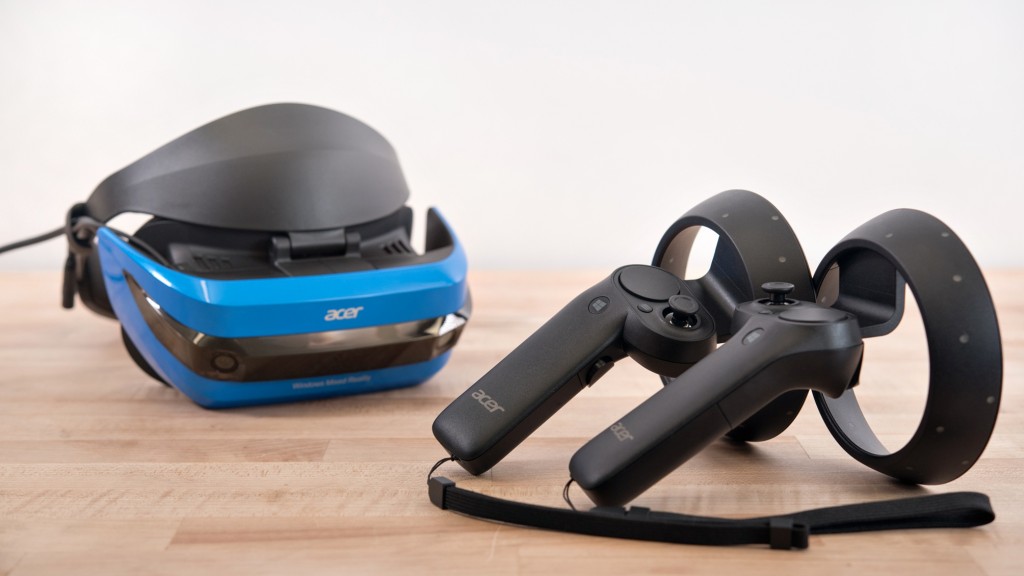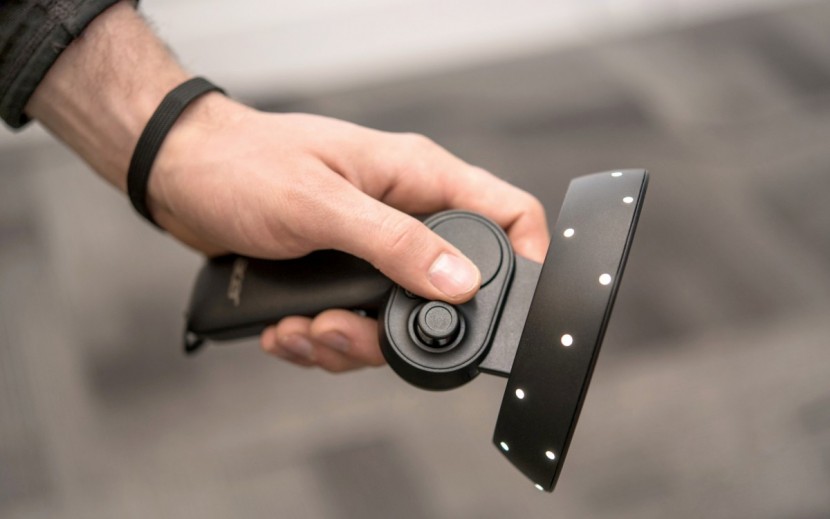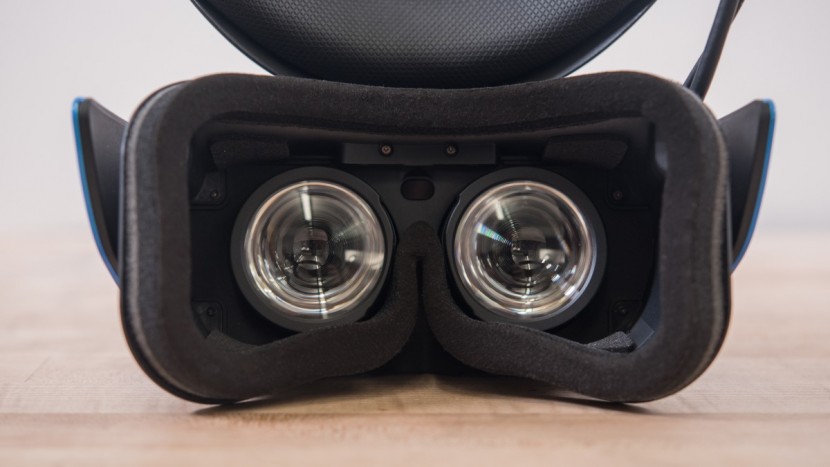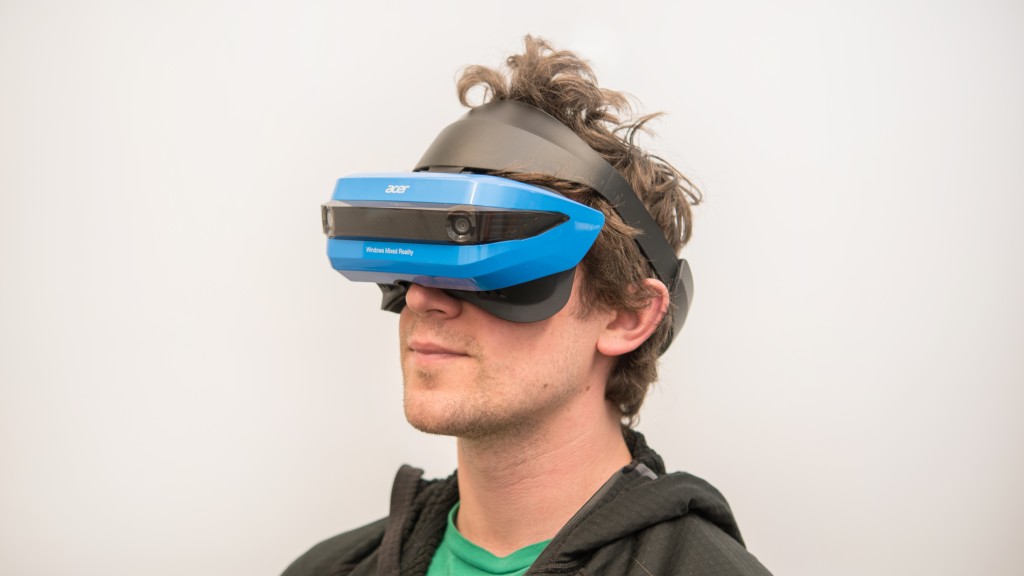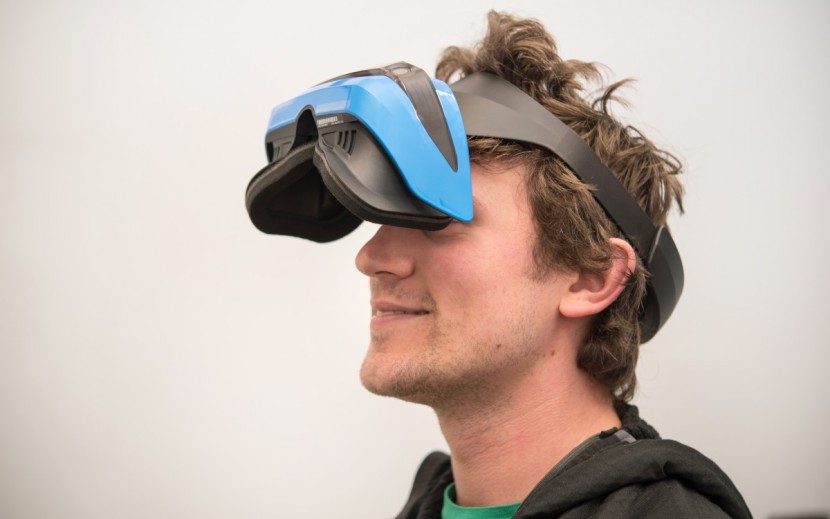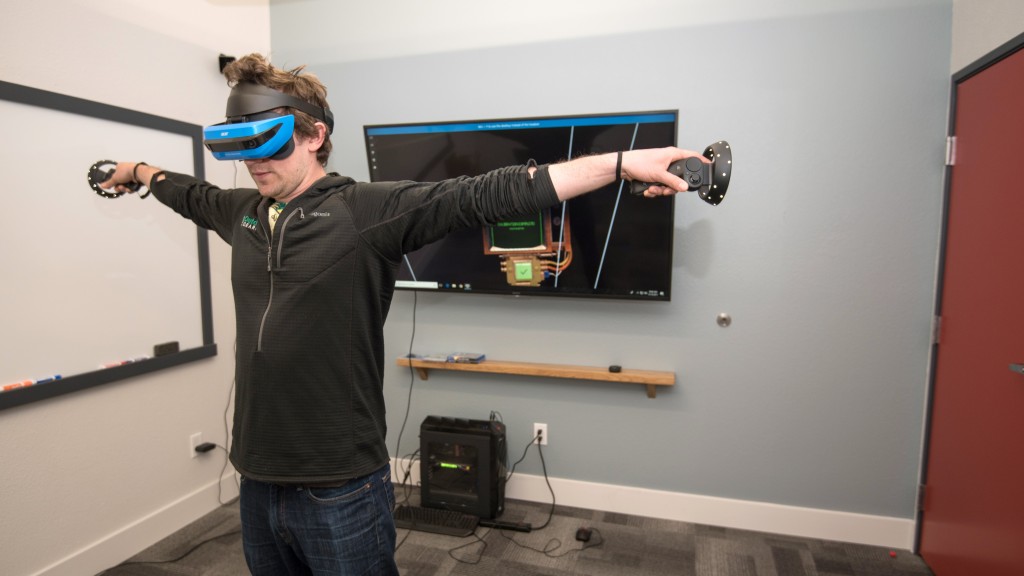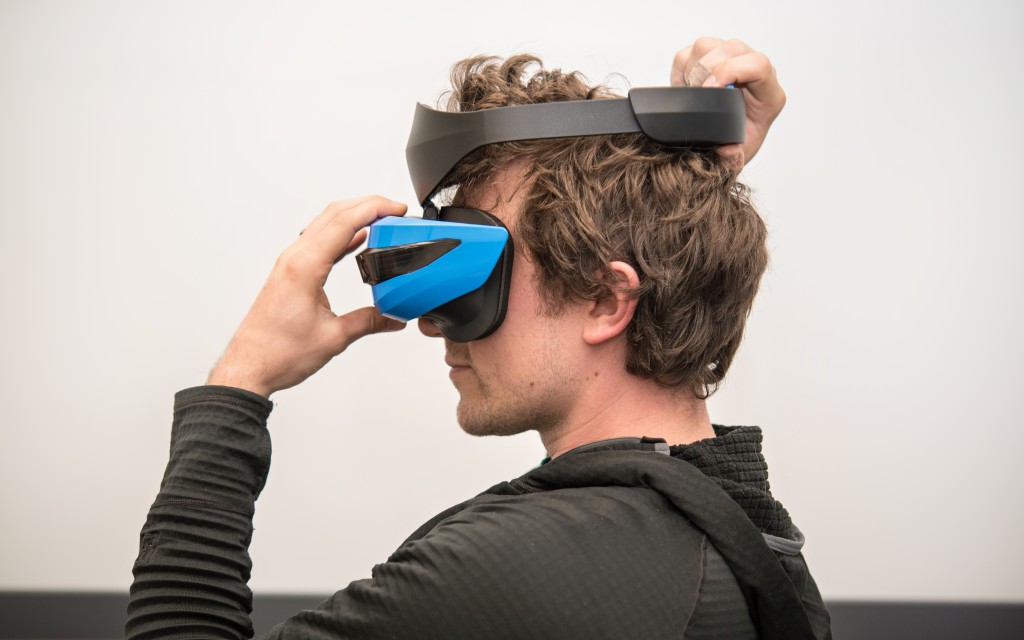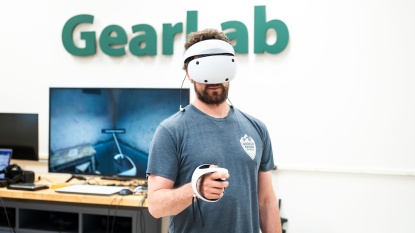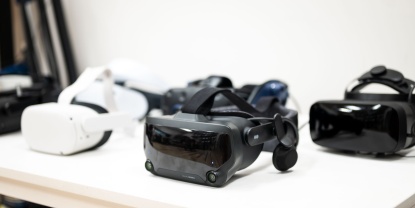Acer AH101-D8EY Review

Our Verdict
Our Analysis and Test Results
The Acer scored a few points worse than the Samsung Gear VR — a significant fact, as the Gear VR is a mobile headset and the Acer is a tethered model. This should have given the Acer a distinct edge. This Acer did score slightly higher than the Google Daydream View.
Interactiveness
The Acer delivered an alright performance for interactiveness. It uses a pair of hand controllers to interact with its virtual environment. They are relatively ergonomic, but we weren't the biggest fans of the touchpads on the controller. They felt a little finicky and didn't always track our inputs quite right.
You also have the option to use an Xbox controller or keyboard/mouse combo if you prefer, but that does anchor you to a sitting position. In terms of limitation on your movement, the primary one is the length of the tether, which is a little on the short side compared to some other products.
The motion tracking is based on two cameras in the headset, rather than external sensors. These cameras are quite good at monitoring your position, but weren't the best at keeping track of the controllers. They would drift and jump around quite frequently, rendering them unusable until they reset when the cameras would register them. It would also almost always lose the controller position when they were at your sides, unlike the PSVR.
Visual Immersiveness
The Acer's performance improved slightly from the previous metric. It did a very good job blocking out ambient light, with only the tiniest amounts coming in from the sides of the headset.
This model also earned some points for having one of the highest resolutions of any headset we tested, at 1440 x 1440 per eye. However, this didn't necessarily translate to increased sharpness, as it was still very easy for text to become out of focus as soon as it wasn't in the sweet spot for your eyes.
The Acer lost a few points for having a reduced field of view compared to the other headsets, only having about 95°, as shown below.
The overall image quality of the Acer is good, but far from great and definitely pales in comparison to the HTC Vive, Oculus Rift, or PSVR. The cliff house hub that you start your virtual reality experience in is quite visually stunning, but we found the barrier that pops up to alert you that there is an obstacle in the real world to be quite trigger-happy. This severely detracted from the overall visual experience, with the on-screen barrier showing up every time we turned too quickly in our tests.
Comfort
The Acer again delivered a slightly above-average comfort performance. It is actually very comfortable to wear, even for longer periods of time. It has plenty of padding, and we really liked the feature where the headset easily flipped up, allowing you to talk to someone else without feeling totally ridiculous.
Unfortunately, we didn't find the Acer to be a particularly enjoyable experience if you wear glasses. It seemed like there should be plenty of room for glasses, but we found the lenses pressed back on the glasses. This either forces you to wear the headset in an odd way or risk scratching your glasses if the headset is properly cinched down. The foam padding that so effectively blocks light also blocks the majority of the airflow, leaving your face and forehead quite sweaty if worn for a long time and it is at all warm where you are.
User Friendliness
The Acer broke its relatively lackluster trend here and performed better than most other units we tested. Once the initial setup has been completed, you pretty much only have to pick the Acer up and put it on to be ready to go. This model isn't quite as easy to adjust in size as some of the other models, utilizing a thumb wheel rather than a sliding system, like the PSVR.
It also is very easy to install headphones on the Acer, with nothing inhibiting access to the audio ports.
Ease of Setup
It's quite easy to set up and start using the Acer straight out of the box. The hardware setup is a trivial task for this headset, only requiring you to plug in an HDMI and a USB cord. It is by far the easiest of the tethered headsets to set up in terms of hardware.
The software setup process is also quite easy, with prompts loading up as soon as you connected it and a wizard taking you through the entire process, which only took about 10 minutes.
The Acer has less stringent hardware requirements than the other PC-based tethered headsets, but you do need to have a Bluetooth-enabled computer. There is not an adapter included, so you will have to buy one if your computer does not have Bluetooth built-in.
Value
While the Acer is one of the least expensive tethered headsets, there is a huge drop in performance compared to the PSVR, Oculus or the HTC. We would recommend saving a little more and getting one of those, especially as the prices for those top-tier headsets are dropping rapidly.
Conclusion
All in all, we found the Acer to be astonishingly lackluster. This middle-of-the-road headset failed to impress and is hard for us to recommend. There are far better headsets that don't cost a whole lot more and are vastly preferable.


